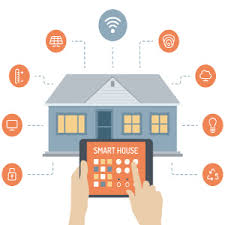Nuance Audio is a new option for people who resist traditional aids, from the company that makes Ray-Bans and operates LensCrafters.
Seekers of Meaning Podcast Posted Online March 7, 2025
What's Next Longevity Deal Talk Episode 32, January, 2025
Presentation: What's Next Longevity Venture Summit, June, 2025

 Has the 'Voice First' interface trend gone mainstream -- and can it benefit seniors? Some think so. What has initially been driven by Apple platform Siri and the Amazon Echo – and now with Google Home -- is about to become mainstream (or as it is described, 'Voice First’) as the
Has the 'Voice First' interface trend gone mainstream -- and can it benefit seniors? Some think so. What has initially been driven by Apple platform Siri and the Amazon Echo – and now with Google Home -- is about to become mainstream (or as it is described, 'Voice First’) as the  The upshot: older adults are not buying into the trendiest tech. Maybe it is because they can’t afford it, aren’t aware of it, or are unconvinced of its value. Or maybe the unconvinced who could afford to spend the money fear privacy violations or identity theft. Or are burned out at staring at too much information on Facebook or Twitter. Considering their twenty years of life
The upshot: older adults are not buying into the trendiest tech. Maybe it is because they can’t afford it, aren’t aware of it, or are unconvinced of its value. Or maybe the unconvinced who could afford to spend the money fear privacy violations or identity theft. Or are burned out at staring at too much information on Facebook or Twitter. Considering their twenty years of life  Tech-enabling home care is one lens on future of care. Venture capitalists listen carefully for trends fueled by talk in the media. During the past several years, they heard plenty -- about the
Tech-enabling home care is one lens on future of care. Venture capitalists listen carefully for trends fueled by talk in the media. During the past several years, they heard plenty -- about the  Consider the following possible though unlikely 2017 tech advances. On the cusp of the new year and the 2017
Consider the following possible though unlikely 2017 tech advances. On the cusp of the new year and the 2017